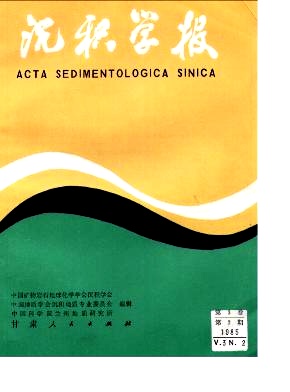A PRELIMINARY STUDY ON GEOCHEMICAL CHARACTERISTICS OF COAL-TYPE GAS IN ZHONGYUAN-HUABEI OIL-GAS AREA
- Received Date: 1984-10-01
- Publish Date: 1985-06-10
Abstract: There is a brief discussion about the naming of several main combustible natural gases in the first part of this paper. The authors suggest that the natural gas relative to the formation of oil be named oil-type gas; the one now called coal-gas be named coal type gas; however, the gas in coal bed continue to be called the coal-mine gas correponding to the oil-field associated gas in oil-type gas. The identification of methane carbon isotope which this paper briefly covers is at present considered as the main index to identify natural gases with differenrt genesis. It is also one of the geochemical indexes which are most widespreadly used at home. Argon isotope used as an identification index. Since the souce-rock ages of coal-type gas and oil-type gas respectively belong to the Carboniferous——the Per- mian and the Lower Tertiary, there is a sharp disparity in their ages. As a result, it is possible to distinguish these two kinds of natural gases according to the chronological accumulation effect of 40Ar in natural gas. The determination of the abundance ratios of 40Ar/38Ar in the natural gas of Zhongyuan-Huabei Oil-Gas area has shown that in the study area the 40Ar/36Ar ratios in the natural gas relative to the Tertiary oil-type gas are comparatively low,between 355-590; however,those relative to the coal-type gas, of Wen Well 23 in Zhongyuan Oilfield are between 930-1340. Moreover, some few gas reservoirs in Zhongyuan Oilfield have demonstrated a feature of the mixed gas of coal-type gas and oil-type gas. Merscury abundance in natural gas used as an identification indicator of coal-type gas. The determination of the mercury abundance in the natural gas of Zhong-yuan-Huabie Oil-Gas Area has shown that the average mercuy abundance of the natural gas relative to oil-type gas in Zhongyuan Oilfield is about n×102 mug/m (the same unite below). For instance, the mercury abundance of Pu Well 1-95 is abous 4.9-9.11×102, but the one, relative to coal-type gas, of both Well 23 is about 5.11×104, which is nearly about n×100 times higher than the average one relative to oil-type gas. The similar result of mercury abundance determination has been obtained in Huabei Oilfield. Therefore, there are some examples of higher mercury abundance in the natural gas relative to typical oil-type gas in the both fields. Obviously,the mercury abundance in natural gas used as an identification indicator of coal-type gas indicates several possibilities. Reseach on using the condensate carbon isotope as the identification of coal-type gas. It is an identification index that has not yet been used before. Generally speaking,very few stydies have been made on the condensate carbon isotope.The study result of the condensate carbon isotope of Zhongyuan and Sichuang oil-gas areas has initially shown that the condnsate relative to coal-type gas is comparatively consituted by heavier carbon isotopes. For instance, the 13C value of the condensate in Wen Well 23 is -24.5‰, however, those in other oil-gas wells are-27?8.5%0 namely, the condensate relative to coal-type gas is 2.5-3‰.richer in 13C than one relative to oil-type gas. The similar result has been obtained from Zhon-gba Gasfield in Sichuang Province. The the authors think that it may have a relation to the 13C enrichment of organic mother matters of lake-marsh facies of coal formation, and it is also the reflection of isotope inheritance effect.
| Citation: | Xu Yongchang, Shen Ping. A PRELIMINARY STUDY ON GEOCHEMICAL CHARACTERISTICS OF COAL-TYPE GAS IN ZHONGYUAN-HUABEI OIL-GAS AREA[J]. Acta Sedimentologica Sinica, 1985, 3(2): 37-46. |






 DownLoad:
DownLoad: